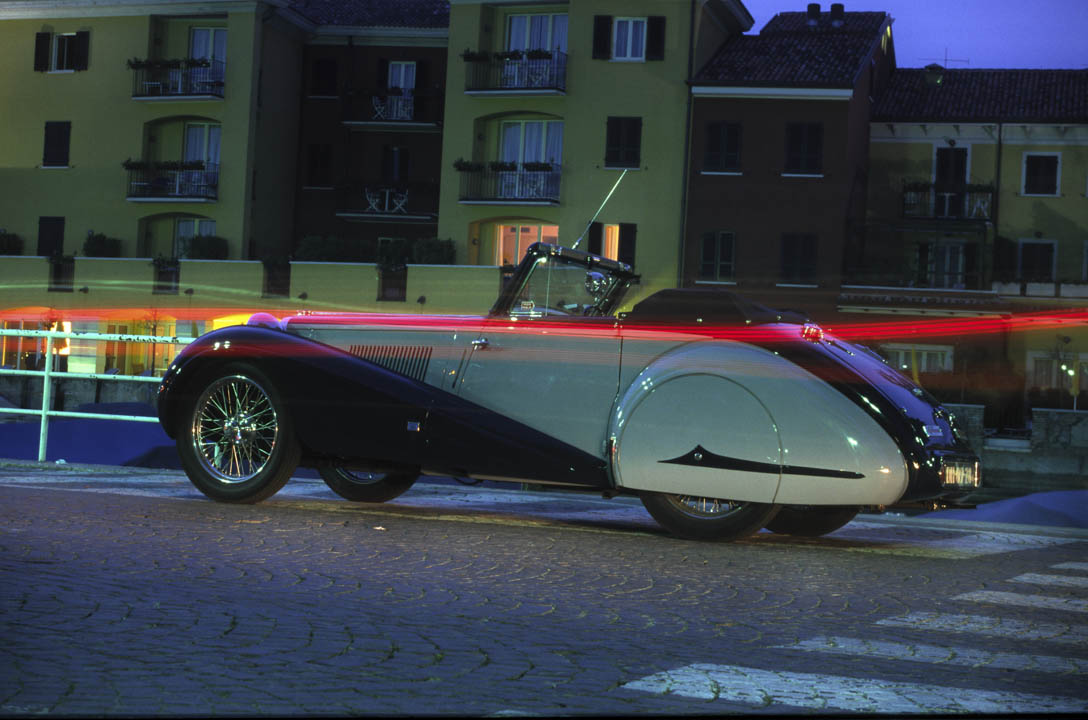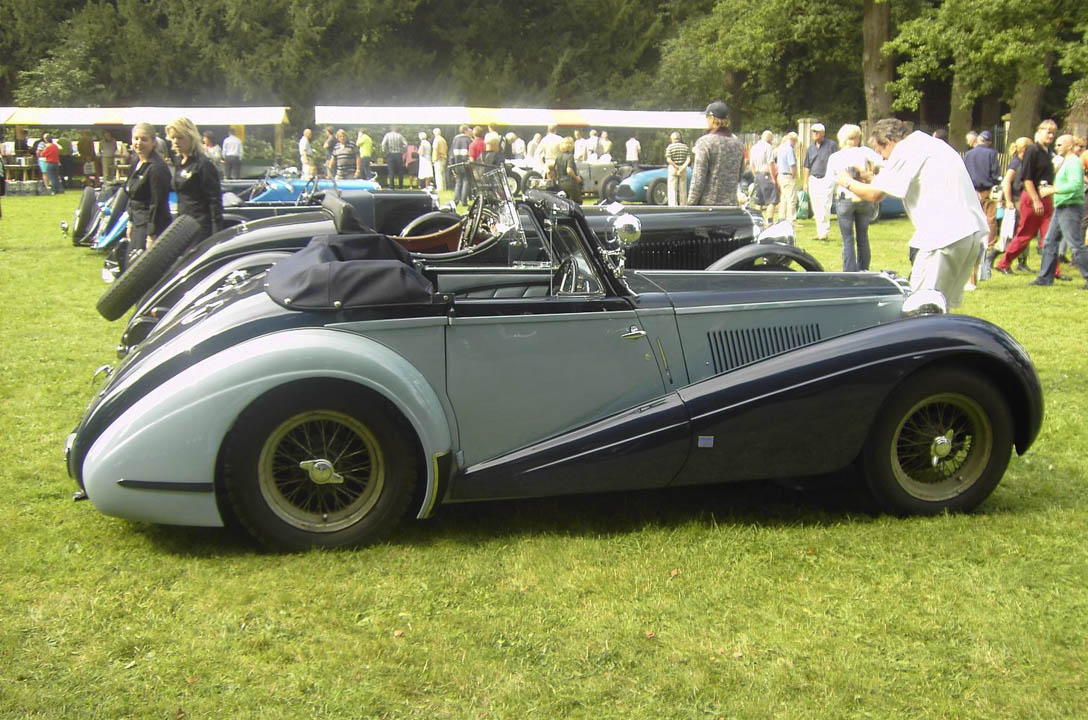Symphony has got her nose-job
Symphony is over 70 now. So she deserves a present, doesn’t she? A lady of this age is likely to be at the plastic surgeon!? So, Symphony got her nose-job.
Symphony, who? Nose-job, how? I will explain. Symphony is a ‘one-off’ special MG TA from 1936 with a rather luxurious body built by Park Ward coachbuilders. Most of the people know her, by seeing her in real life or in magazines, with the characteristic T-type chrome radiator shell. This radiator shell was subject to the nose-job.
The birth of Symphony
Symphony was born in the workshop of Park Ward. The son of the owner, Charles Ward, liked to be a physician but was forced to work in his father’s business. Good or bad he learned the handicraft of coachbuilder (yes, for cars). Around his 30th birthday he wanted to prove his skills by building his own masterpiece. This had to be a body designed and built by him. Park Ward was only building car-bodies for the absolute top in rolling-chassis (chassis, axles, engine, steering and dashboard) like Rolls Royce and Bentley; it is rather logical that Charles was using one of these chassis to build his own masterpiece. But… Charles had another demand; his masterpiece had to be his daily-car! That meant Charles had to buy the rolling chassis himself and when the car was in use he was responsible for the maintenance. For a 30 year old, married, man such a Bentley was not feasible. Charles saw in the MG TA of 1936 the ideal rolling chassis: great technique, nicely priced and reasonable cost of maintenance.
Extravagant coachwork
Within the year Charles did the design, improved the rolling-chassis and built the high-flown body on the MG-chassis. In authentic photographs shown in the magazine ‘Autocar’ (the magazine Classic Cars and Thoroughbreds which were send to me) you can see that Charles made the front wings end just where the doors begin and the car had a (modified) MG radiator shell. When I visited the widow of Charles, Miss Joy Ward, she allowed me to take photographs from the pages in the family-album detailing various stages of the build. In the caption I could read the name Charles had given to his masterpiece: Symphony. There was also a photo where Joy and Charles were having a picnic alongside Symphony.
After the war Charles liked to experiment with the modern lines of that time. He did this by giving his personal car a total face-lift. In 1946 Symphony got long flowing front wings which ended just before the rear wings, an improved drop-head roof, radio and in prominent streamlined painted nose-cowl. These long flowing wings are later returned in the Park Ward 1949 Bentley’s. The original photo’s of the face-lifted Symphony (in front of the Park ward premises) were with the car when I collected her. In the book ‘The immortal T-series’ you can find two of them. For a time Symphony was equipped again with the T-type chrome radiator shell. There is a poor picture of 1960 where it can be seen. More history of this phase does not exist.
MG radiator shell? Of course!
When I acquired Symphony she didn’t look flourishing. She needed a total (body-off) restoration. So I was free to choose which nose I would restore: the modified MG radiator shell or the painted streamlined cowl. As I was deeply into the MG-world it was logical for me that the characteristic MG nose should return. This is how you knew her for 14 years. This was not a wrong choice as proven by all the cups she won on several concourse d’elegance. Some of them where very special like “Het Loo concourse” and of “European Concourse d’elegance in Schwetsingen”. The people found her beautiful.
Doubts about the nose
In the past 14 years my wife and I got very familiar with the lines of Symphony and came to the conclusion that the square front (T-type shell) was not harmonising with the spherical round curves of the body. I always had to manoeuvre photographers in such a way that they didn’t take pictures straight from the front. She was, according to us, just not looking correct that way.
We wanted to put the 1946 painted front-cowl back on, thinking this would be a quick change. But after making enquiries it showed to be a real heavy operation. The original cowl was cannibalised (sold by previous owners). Years and years with a lot of pleasure and success passed by.
Wrinkled nose
Until ... in the summer of 2005 Symphony’s nose got awful wrinkles. Yes, even burst. An operation was inevitable to keep her presentable on her 70th birthday. The modified MG radiator shell was UK-made in 1985 in such a bad way, it needed extensive grinding before it could be re-chromed again . The shell had become extremely thin and couldn’t withstand anymore heavy treatment. That meant a total rebuild of this one-off MG-shell at a specialized British workshop.
Dutch coachbuilder
When I had to get a new nose build I could of course choose the painted streamlined front cowl. With a experienced Dutch coachbuilder (he had done more things for Symphony) we did a thorough study of the two available pictures. I had faith in the qualities of the coachbuilder who made the aluminium nose according to the two pictures. In reality it was an enormous job with endless fitting, measuring and comparing the photographs. The hood had to be shortened and additionally the radiator needed severe adjustment and new fitting. The chromium rim for keeping the gauze in place had to be made from scratch. After the paint-job it showed how well the nose was built; everything fitted correctly.
Bandage off
The time has come to reveal and take her bandages off, my wife and I find her more beautiful now, even from the font
This is how she will remain for many years to come.


























.jpg)
.jpg)
.jpg)
.jpg)
.jpg)
(1).jpg)
(1).jpg)
.jpg)
.jpg)
.jpg)
.jpg)
.jpg)
.jpg)
.jpg)
.jpg)
.jpg)
.jpg)
.jpg)








.jpg)

































